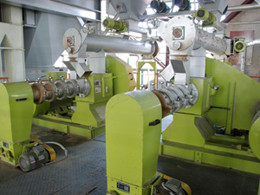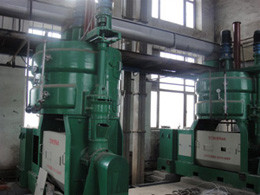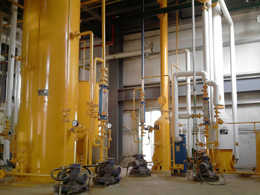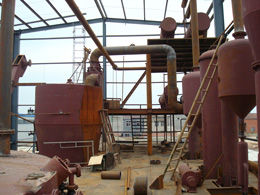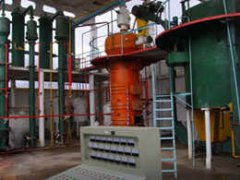Processing of Corn Oil
If you want to find the way of processing of corn oil from corn, You should definitely look at this article.
Corn Oil Processing
Firstly the corn is separated from the cob, sorted and cleaned. The corn is then soaked in warm water that softens up the kernel so it can be easily broken apart. The strachy part of the kernel is separated from the germ. The germ goes on for some spinning down and rinsing which is designed to remove excess starch. From there, the oil is extracted and refined by mechanical (press/centrifugation) and chemical (solvent) extractions.
Corn Oil Extraction
Oil is expelled from the germ using a heated screw press, which can yield as much as 50 percent of the germ oil. And the remaining oil is stripped from the "press cake" with the solvent hexane, a volatile by-product of gasoline production. (Hexane is introduced to the cake bed with an exposure time as brief as possible so that hexane residual in the oil will be limited.) The corn oil in the hexane solution is heated to vaporize the volatile solvent, which is captured as a condensate and used again. Then the heat expelled and hexane extracted oils are combined as crude corn oil; the remaining cake is processed for livestock feed.
Corn oil / Maize oil is oil that is extracted from the germ of corn / maize. Its main use is in cooking, where its high smoke point makes refined corn oil a valuable frying oil. It is also a key ingredient in some margarines.Corn oil is generally less expensive than most other types of vegetable oils. One bushel of corn contains 1.55 pounds of corn oil (2.8% by weight). Corn oil comes from only one part of the corn kernel, namely the germ. This is the only "living" part of the kernel, the other parts are used for food storage and life support of the emerging corn embryo. The germ contains the genetic materials for a corn plant to grow, some of which are proteins and organic substances. About 25% of the germ is oil.
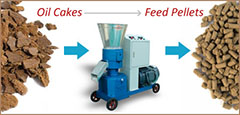



Want to set up a mini mustard oil mill of your own ? With the rapid ...
Mustards are part of the oilseed family and are regarded both as a s...
Interested in begin a small size corn oil extraction plant but dont ...
Do you want to make the edible rice bran oil at from using your mill...

